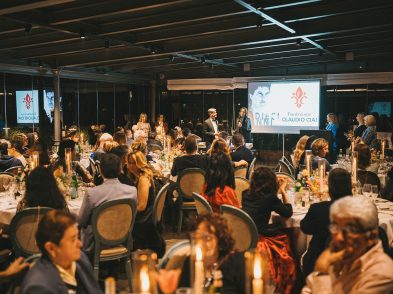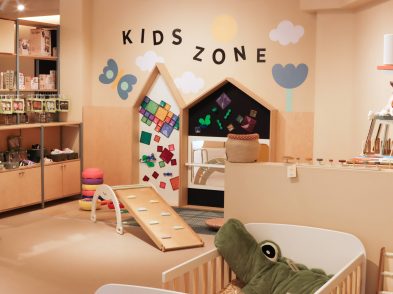Born in New York in 1951, Bill Viola is widely recognized as one of the world’s leading visual artists. Over the last 35 years, he has created video tapes, architectural video installations, sound spaces and video and electronic music performances, flat panel video pieces, and works for television broadcasts.
He has been instrumental in establishing video as a vital form of contemporary art. According to his website, www.billviola.com, Viola ‘uses video to explore the phenomena of sense perception as an avenue to self-knowledge’ and his installations aim to ‘envelope the viewer in image and sound.’ His works focus on universal human experience-birth, death, the unfolding of consciousness-and he finds inspiration in both traditional art and the mysticism of the East and West. Viola’s works have entered museums and galleries worldwide and many distinguished private and public collections.
A year after receiving his first degree at Syracuse University in 1973, Viola travelled to Florence for 18 months to work as technical director of production for Art/Tapes/22. Founded by Maria Gloria Bicocchi, Art/Tapes/22 was one of the first video art studios in Europe. Today, Viola lives with his wife and long-time collaborator, Kira Perov, in Long Beach, California.
Since the early 1970s, Viola’s video art works have been seen all over Italy and the world. Although one of his most renowned installations, Emergence (2002), was screened alongside masterworks by Michelangelo until May 9 in Florence’s Accademia Gallery, you can still catch his works up north: his installation Deserts is at Milan’s prestigious Pinacoteca di Brera, in the Mocchirolo Chapel, until June 6 (www.brera.beniculturali.it) and from July 15 to November 7, his piece Anima will be showcased in the exhibition Magic Lantern and Painted Film: Four Centuries of Cinema, at Turin’s La Venaria Reale (www.lavenaria.it).

I recently saw your work in the Accademia. Can you talk to us about your installation there?
Well, as you know, I lived in Florence for 18 months in the 1970s and the exhibition there was very meaningful for me. I was just sorry that Kira and I couldn’t make it to Florence for the inauguration; we were stopped by the ash cloud! We did, however, toast the event with prosecco. Emergence is a piece that slowly cycles through birth, death, and resurrection. It is about mortality, the human body and how it represents perfection, so we were very moved when the director, Franca Falletti, suggested that we show this work together with some of the most perfect human figures ever created by an artist.
Yours has been a monumental feat. Can you describe in a few words what it feels like to be the first living contemporary artist to have his work next to that of Michelangelo in the Accademia?
It’s humbling. Thrilling. Daunting.
Tell me about Florence and about your time here.
The 1970s was an exciting time when the very beginnings of video art and contemporary arts were emerging. I came to Florence on the invitation of Maria Gloria Bicocchi to be the technical director of production. of Art/Tapes/22, and I lived there for 18 months. It was a very influential time for me. Florence is the Renaissance city and I learned from, and was inspired by the art of the masters of the Renaissance. It was an incredibly formative period also because I was on the ground floor of thinking about and developing new art. I used to walk down via Ricasoli every day past the Accademia. So having my work there is just incredible.
Florence is an important city of art but it is art from the past not the present. The city is now making a great effort to open up to the contemporary arts, after having neglected them for so long. For some months, there was an installation by Maurizio Nannucci on one of the facades of the Uffizi, the one facing the river; it was a blue neon message that read ‘All art has been contemporary.’
I know Nannucci well; I met him when I lived in Florence. He was also making new art at the time. Nannucci is right: all art has been and is contemporary. The Renaissance use of perspective was so incredibly innovative at the time and it was absolutely contemporary. The Renaissance was an explosion of creativity, just like our world today. We live in a new world and as a result, there is a new social consciousness. It’s a digital revolution and explosion of thoughts and ideas, in which everything is mixing together-cultures, languages, times, views and perspectives. The Internet is an example of this: it’s like a giant mixing machine where everything becomes one. It is such an exciting period for creative beings.
What’s the state of contemporary art today? What does ‘creativity’ mean?
We are all creative beings and have always been creative beings. We are transformers; we transform things. No one is satisfied with accepting the status quo because everyone has a light or a spark of creativity inside. This doesn’t mean being an artist.
A plumber who finds a new way to fix something is creative; a scientist who makes a great discovery uses his creative sense. Human creativity is boundless, really.
What inspired you in Florence when you lived here? What were some of the things you did to kick start the creative spark?
One thing I did was sit on top of Giotto’s bell tower and wait for the bells to ring… now I know why Quasimodo was deaf! At the time, I recorded the sound of the bells. Over the years, I have recorded thousands of sounds, and now I have a huge library of recordings. In Florence, I also used to record the ambient sounds in the city’s churches when no one was inside them. It’s incredible because these places aren’t silent; there is always sound. It’s like a reverberation or under-sound; the base level of existence. Stone monuments, like Gothic stone cathedrals, make the best sound.
I have noticed that many of your works are currently being shown across Italy. You seem to have become quite popular here. Your work was in Florence‘s Accademia, you currently have an installation in the Pinacoteca di Brera and another work will be showcased in Turin‘s La Venaria Reale this summer.
Yes, its true! It really all began in Rome last year, when I had an individual exhibition at Palazzo delle Esposizioni. Rome and the show were a hit, and I was so happy to get to know Italy and Italians more because the people are so nice. The support there is fantastic at this point in my life; in January 2011, I’m turning 60 and it will also be my 45th year of video artwork. I can say that I’ve seen it all develop.
The first event of this year’s Lo Schermo dell’Arte Film Festival, running from June 29 to July 2 at the Oblate Library, is dedicated to Bill Viola, with the screening of Mark Kidel’s documentary Bill Viola: The Eye of the Heart on June 29. Kidel followed Viola for over two-and-a-half years and accompanied him to places of particular personal significance: the Californian desert and the Basilica di San Francesco in Assisi. The film features back-stage scenes and a wealth of never-before-seen material. For more information, email info@schermodellarte.org or call 333/4285531.







